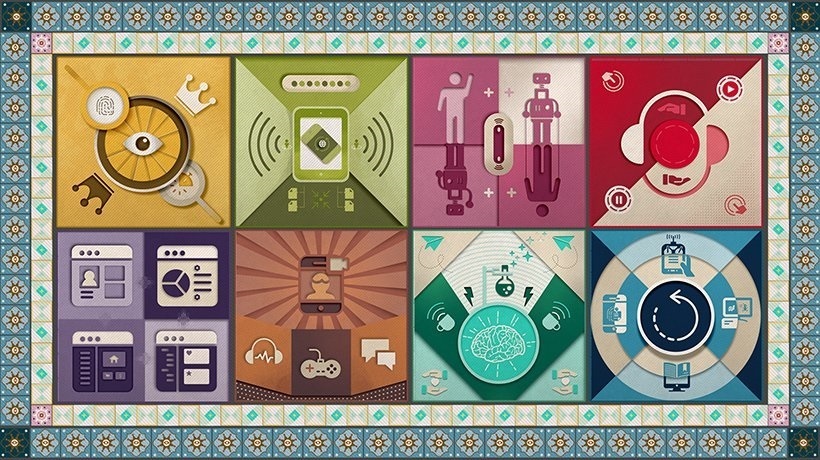Microlearning And Modern Learners
According to Bersin by Deloitte (n.d.), modern learners are overwhelmed, distracted, and impatient. Learners are untethered, with a tendency to be constantly on the move and in different forms of employment, to access information on-demand to solve issues, and are heavily time-strapped (having only about 1% of a typical workweek to spend on training and development). With rapid changes in work demands, many skills are decreasing in relevance in less than five years. Organizations are hard-pressed to upskill their employees consistently and efficiently. In contrast, employees are increasingly digitally literate and social. They are empowered learners who look for work support via interactions with their personal and professional networks.
Organizations can capitalize on these characteristics by training their employees in an entertaining and engaging manner with the aim of improving their performance. This article explains what microlearning is and 4 key efficiencies provided by microlearning Instructional Design (ID), as compared to that of mesolearning, from the perspective of Instructional Designers.
Instructional Design For Microlearning
Hug (2007) identified three levels of instruction: macro (program level), meso (curriculum level), and micro (bite-sized within a module). We are familiar with the differences in macro and mesolearning. Similarly, there are distinct differences in the Instructional Design for mesolearning and microlearning. Khan’s (2019) framework for microlearning highlighted some of these differences. He mentioned that microlearning needs to be interactive and engaging, with a usable interface design, delivered in short durations either as stand-alone micromodules or part of a whole as just-in-time support to boost retention, via device-independent technologies. Furthermore, the evaluation of learning must be outcomes-focused and the implementation cost-effective to the institution.
Microlearning is often used in corporate training to support training prework, post-instruction follow-up, just-in-time learning at the point of need, and performance support (Torgerson & Iannone, 2020). My department has developed micromodules targeted mostly at training prework, post-instruction follow-up, and performance support for our learners over a period of five years.
Recently, we developed a micromodule on critical reflection for our undergraduates. Our team consisted of members with varied experience in writing for microlearning, and contrasting disciplinary backgrounds. This diversity formed the motivation to share our inputs on the efficiency gains between Instructional Design for mesolearning and microlearning. We hope that others embarking on developing microlearning content could benefit from these examples and have a deeper understanding of what efficiencies microlearning affords.
Key Efficiencies: Mesolearning ID Vs. Microlearning ID
1. Compact
The first efficiency in moving to microlearning relates to the compactness of the medium compared to conventional pedagogy. This term refers to the necessity to script precisely all presentational language relating to the context, form, and function of the various critical thinking skills. Conveyed via a voice-over, this language is characterized by a rapid delivery speed, variegated intonation, and a complete absence of natural features such as fillers, hesitations, and other redundancies. Instructional language is similarly marked, although this at least resembles its conventional counterpart as seen in regular task design and orthodox classroom materials.
2. Streamlined
The second distinguishing ID feature relates to the regular, discrete nature of the topic design. Each unit is subdivided into three components of comparable duration (discovery, development, and reinforcement) which efficiently enables an author’s efforts to be directed toward a specific end product. This streamlining also helps provide students with a sense of consistent structure and progression as they move through the learning materials.
When combined, efficient ID through microlearning is clearly apparent. Compact, repeatable units provide a relatively intense stream of information with no wastage. Predictable, structured topics allow authors to efficiently focus their attention on writing specific types of feasible input.
3. Focused Bite-Sized Engagement
As educators and trainers, we constantly try to engage our learners to facilitate learning. Effective teachers in the classroom depend on cues such as learners’ body language and facial expression to interpret their level of understanding as the teaching takes place, making teaching an interactive bidirectional experience in a fluid manner. A classroom teacher may choose to ask questions to stimulate thinking, answer questions to clarify concepts or insert an activity on the spot to emphasize an idea.
In contrast, the online microlearning delivery does not allow one to obtain cues about a learner’s understanding. Furthermore, due to the static nature of the content, no adaptation is possible to adjust to the learners’ level of understanding. As such, in the design of the micromodule, we undertook the following considerations:
- Keep the microlearning units small and digestible to prevent learner fatigue
- Provide reference across units to reinforce concepts learned in earlier/subsequent units
- Present visuals that are easy on the eyes while being interesting and visually appealing
- Use voice-over talents who are expressive and able to engage the learner through effective handling of vocal strategies such as pitch and loudness inflections
- Insert interactive activities at strategic locations through the units to maintain engagement. Activities need to be fun but age-appropriate
4. Learner Control
The types of activities to facilitate feedback and assessment are limited in microlearning since in such a delivery mode, learner response often needs to be binary for learners to receive immediate and automated feedback on their performance. Thus, we would like to reiterate that microlearning is better suited for training prework, post-instruction follow-up, just-in-time learning at the point of need, and performance support purposes, and not for complex tasks like training in problem-solving.
In going through the micromodule, learners often need to self-assess to decide if they have fully understood the learning content before making the decision to move forward to the next unit or to review the content in the current unit. Because of this, each microlearning unit should provide numerous opportunities for students to return to an earlier section to review the contents as they deem necessary. Learners should also be allowed to reattempt quizzes to improve their scores. Overall, the learner retains their autonomy to their learning in the units.
The examples above illustrate that there are distinct efficiencies provided by the Instructional Design for microlearning as compared to mesolearning. We hope that this article provides food for thought for educators and trainers embarking on microlearning.
References:
- Deloitte Development LLC (n.d.). Meet the Modern Learner: Engaging the overwhelmed, distracted, and impatient employee.
- Hug, T. (2007). Didactics of microlearning: Concepts, discourses, and examples. Munster: Waxmann Verlag.
- Torgerson, C. & Iannone, S. (2020). What Works in Talent Development: Designing Microlearning. Alexandria, VA: ATD Press.









